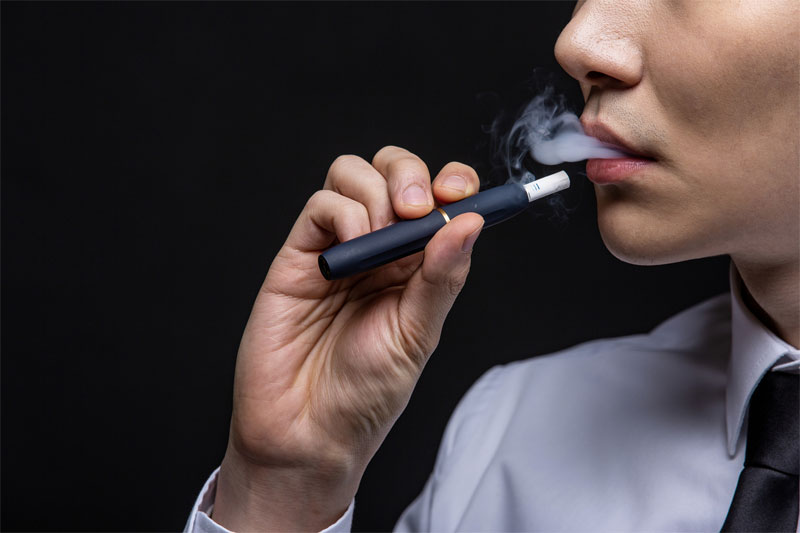
Exploring the potential link between e-cigarettes and mouth cancer involves an understanding of the various factors that may contribute to oral health risks. E-cigarettes, also known as electronic cigarettes or vaping devices, have gained immense popularity over the past decade as a substitute for conventional smoking. However, questions continue to arise about their safety and the impact on oral health, particularly regarding the risk of mouth cancer. Even though they are often marketed as a safer alternative to traditional cigarettes, e-cigarettes are not without their health risks, and the long-term effects remain a subject of ongoing research.
Understanding the Composition of E-Cigarettes
The primary component of e-cigarettes is the e-liquid or vape juice, which typically contains nicotine, flavoring agents, propylene glycol or vegetable glycerin, and other chemicals. The aerosol produced by e-cigarettes when this liquid is heated is inhaled by users, exposing their oral cavity to these substances. It is crucial to note that while e-cigarettes do not contain tobacco, they often contain nicotine, which is addictive and could contribute to various health issues.
Potential Carcinogens in E-Cigarettes
E-cigarette vapor does contain various chemicals, some of which are known carcinogens. Formaldehyde and acetaldehyde, both recognized as potential cancer-causing agents, have been detected in the vapor. These substances, though present in lower quantities compared to traditional cigarette smoke, still raise concerns about prolonged exposure affecting the tissues in the mouth and throat, potentially increasing cancer risk.
Impact on the Oral Environment
Nicotine in e-cigarettes can reduce the flow of saliva, leading to dry mouth conditions, which in turn can promote bacterial growth. An increase in harmful bacteria can exacerbate oral health issues, including gum disease and tooth decay, which are risk factors for oral cancers. Additionally, the flavors added to e-liquids present their own set of concerns. Some flavorings, when heated, can release toxic compounds that may irritate or damage oral tissues.
Research is still ongoing to fully understand the long-term impact of these substances on oral health and cancer risk.
Studies Linking E-Cigarettes and Mouth Cancer

Though direct evidence linking e-cigarette use to mouth cancer is limited, some studies suggest that the ingredients in e-cigarettes have the potential to cause cellular changes in oral tissues. For instance, a study published in ‘Oral Oncology’ indicated that exposure to e-cigarette vapor might lead to genetic and molecular changes associated with cancer development. However, it’s important to note that these studies are preliminary, and more comprehensive research is necessary to draw definitive conclusions.
Comparative Risks: E-Cigarettes vs. Traditional Cigarettes
When comparing the risks of e-cigarettes and traditional cigarettes, one must consider that while e-cigarettes contain fewer carcinogens, the potential for harm still exists. Regular cigarette smoke has a well-documented history of causing various cancers, including those in the oral cavity. Although e-cigarettes might reduce some of these toxic exposures, they aren’t free from risk. The key concern is the chronic use and the accumulative exposure over time, which can contribute to oral health issues.
The Role of Vaping Behaviors
The frequency and manner of e-cigarette use can also influence cancer risk. Vaping behaviors, such as the intensity and duration of each session, can alter exposure levels to harmful substances. Additionally, the variety of devices and modifications available can significantly vary the heat produced, subsequently affecting the chemical composition of the vapor inhaled.
Conclusion: E-Cigarettes and Oral Health Concerns
While e-cigarettes may offer a harm-reduction approach for individuals attempting to quit smoking, they are not devoid of risks. The potential for developing mouth cancer from e-cigarette use remains a research question. Current evidence suggests being cautious and aware of the risks, especially concerning long-term oral health. Consulting with healthcare professionals and staying informed through current studies can aid in making safer choices regarding e-cigarette use.
FAQs
Q1: Are e-cigarettes safer than traditional cigarettes for oral health?
While e-cigarettes contain fewer carcinogens than traditional cigarettes, they are not completely safe and still pose oral health risks, including the potential for mouth cancer.
Q2: What ingredients in e-cigarettes are most concerning?
Nicotine, formaldehyde, acetaldehyde, and certain flavorings are particularly concerning for their potential health effects, including cancer risk.
Q3: How can one minimize the risks associated with e-cigarette use?
Minimizing risks involves moderating use, choosing reputed brands with transparency in ingredient lists, and seeking guidance from healthcare providers.